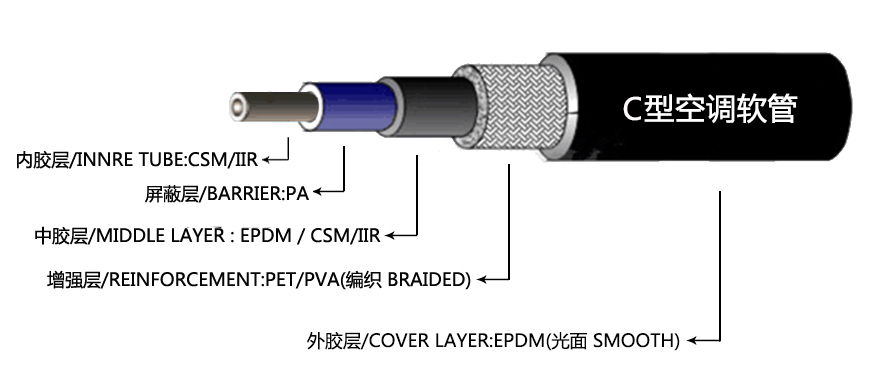Steps to Install a Power Steering Hose in Your Vehicle
How to Install a Power Steering Hose
Installing a power steering hose is an essential maintenance procedure that ensures the smooth functioning of your vehicle's steering system. A power steering hose carries hydraulic fluid from the power steering pump to the steering gear, allowing for easier steering and better handling of the vehicle. Over time, hoses can develop leaks or cracks due to wear and tear, leading to a loss of power steering fluid and, subsequently, power steering assist. If you notice any signs of a leaking power steering hose, it’s crucial to address the issue promptly. Below is a step-by-step guide to help you install a new power steering hose.
Tools and Materials Needed
1. New Power Steering Hose Make sure to get the correct part for your vehicle's make and model. 2. Wrench Set Both metric and standard sizes may be needed. 3. Socket Set For removing any parts in the way of the hose. 4. Pliers To remove clamps that may be holding the hose in place. 5. Drip Pan To catch any leaking fluid during the process. 6. Power Steering Fluid You will need this to refill the system after installation.
Step-by-Step Installation
1. Safety First Before you begin the installation, ensure the vehicle is parked on a flat surface and the engine is off. Disconnect the negative terminal of the battery for safety.
2. Locate the Power Steering Hose Open the hood and locate the power steering pump. The hoses are typically located near this pump, leading to the steering gear.
3. Prepare for Fluid Spillage Place a drip pan underneath the power steering components to catch any leaking fluid.
4. Remove the Old Hose Using your wrench, loosen the fittings on both ends of the power steering hose. Be cautious, as there may be residual fluid in the system. If the hose has clamps, use pliers to remove them first. Once the fittings are loose, carefully pull the hose off.
how to install power steering hose

5. Clean the Connection Points Check the connection points on both the power steering pump and the steering gear for any debris or old sealant. Clean these areas with a rag to ensure a good seal with the new hose.
6. Install the New Hose Take your new power steering hose and carefully connect it to the power steering pump. Hand-tighten the fitting first and then use your wrench to securely tighten it, avoiding overtightening, which could damage the fittings. Repeat this process for the connection at the steering gear.
7. Reinstall Any Clamps If your hose had clamps, be sure to reinstall them to keep the hose securely in place.
8. Refill Power Steering Fluid After the hose is installed, it's time to refill the power steering system. Locate the power steering fluid reservoir and pour in the appropriate fluid as specified in your vehicle's owner manual.
9. Check for Leaks Reconnect the negative battery terminal and start the engine. Turn the steering wheel from lock to lock a few times to circulate the fluid through the newly installed hose. While the engine is running, check for any leaks around the connections. If everything appears tight and leak-free, you are good to go.
10. Dispose of Old Fluid Don’t forget to dispose of any old fluid and the old hose properly, adhering to local environmental regulations.
Conclusion
Installing a power steering hose may seem daunting, but by following these steps, you can save yourself time and money spent on mechanic fees. Regularly inspect your power steering components to catch potential issues early and ensure your vehicle remains safe and enjoyable to drive. Remember, if at any point you feel uncomfortable or unsure, it's always best to trust a professional mechanic for assistance.
-
Ultimate Spiral Protection for Hoses & CablesNewsJun.26,2025
-
The Ultimate Quick-Connect Solutions for Every NeedNewsJun.26,2025
-
SAE J1401 Brake Hose: Reliable Choice for Safe BrakingNewsJun.26,2025
-
Reliable J2064 A/C Hoses for Real-World Cooling NeedsNewsJun.26,2025
-
Heavy-Duty Sewer Jetting Hoses Built to LastNewsJun.26,2025
-
Fix Power Steering Tube Leaks Fast – Durable & Affordable SolutionNewsJun.26,2025

